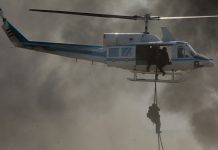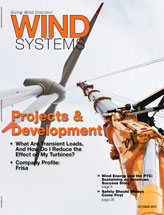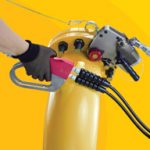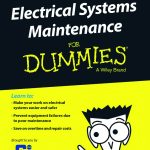We should all take the time to thank wind turbine technicians for wearing their safety gear and following safe work practices. Day after day, they tolerate using this cumbersome, unpleasantly heavy and hot safety gear. They take the time to follow safety guidelines for what appears to be a ridiculous amount of unnecessary time to perform what would be an otherwise simple task. There are so many groans and curses used, but, fortunately for all of us technicians, we still take the time to make these good decisions.
In the wind industry, there are obvious hazards. Potential falls are considered one of the greatest risks while navigating tall towers, and the potential for electrical shock is apparent even for those who don’t work with electrical systems. For these hazards, we use safety gear to reduce or eliminate these hazards.
 There are also hazards that are not so obvious. One such example for electrical work is the arc flash/arc blast from the electrical system. For this electrical hazard, the arc flash/arc blast can occur even if the proper procedures are followed. Thus, using arc blast protective gear is crucial, as well as a safe distance, if possible.
There are also hazards that are not so obvious. One such example for electrical work is the arc flash/arc blast from the electrical system. For this electrical hazard, the arc flash/arc blast can occur even if the proper procedures are followed. Thus, using arc blast protective gear is crucial, as well as a safe distance, if possible.
I believe that arc flash/arc blast is the most underestimated dangers in our industry today. An arc flash/arc blast can happen anytime during a change in state of a circuit interrupter from open-to-closed or closed-to-open. A circuit interrupter could be a switch, relay, contactor, circuit breaker, or fuse. Anytime you break or make a circuit, there is the potential to have an arc flash/arc blast. This can happen when you pull multi-meter test leads off terminal blocks. For those who scoff at the possibility of an arc flash from the meter leads, let’s review why that can happen. When copper changes state from a solid to a gas, it has a huge rate of expansion. If that conductive copper gas expands enough to come into contact with either another phase of electricity or ground, then electrical current can flow through the copper gas cloud, and an arc flash can occur. If (for some reason) you were using two hands and two leads on terminals side by side, and you pulled the leads off the terminals simultaneously, the two arcs caused by you pulling your leads off the terminals could come into contact with each other causing an arc flash. To make this happen, you did not follow the one-handed rule of electrical safety that would have resulted in only one lead coming off the terminal. The one-handed rule is usually thought of as the best practice for preventing deadly shocks. In this case, it could prevent a deadly arc flash. However, if an arc flash/arc blast does occur, it’s not necessarily because you did something bad or unsafe. It can happen even if you do everything right, in which case, hopefully, you were wearing safety protective gear and following the best and safest “what-if-something-goes-wrong” procedures, such as wearing electrical safety gear.
I have been in the wind industry for over 30 years. I have climbed well over 65 miles up and 65 miles down, and not once did my fall-protection gear have to save my life. I have been just as fortunate when it comes to my electrical service work. Not once have I experienced any electrical arc flash/arc blast. My safety gear has not been put to the test. Even so, I do not discard my safety gear or take its use lightly. I am most fond of it now, and I hope to not end my career with a debilitating accident amplified by me not using the protective gear available.
have been in the wind industry for over 30 years. I have climbed well over 65 miles up and 65 miles down, and not once did my fall-protection gear have to save my life. I have been just as fortunate when it comes to my electrical service work. Not once have I experienced any electrical arc flash/arc blast. My safety gear has not been put to the test. Even so, I do not discard my safety gear or take its use lightly. I am most fond of it now, and I hope to not end my career with a debilitating accident amplified by me not using the protective gear available.
Recently, I had the opportunity to discuss an electrical arc flash/arc blast with someone who experienced such an event. This technician is experienced and had been working on an electrical repair. He was in the middle of removing power from the affected circuit and was at a place in the process in which the affected circuit had no load when he switched off a circuit breaker to remove the voltage to that part of the circuit he was planning to work on. Upon switching the circuit breaker, there was an arc flash/arc blast. If he had not been wearing his protective gear or using safe work practices, he would not be working today. Luckily, he was, and he went home as he would any other day.
What if he had decided not to wear this safety gear? This could have turned out disastrous for him, his coworkers, and his family. It could have been death or many months of medical treatment and a lifetime of scars to remind him of the event.
I have included two pictures of the arc flash helmet he had on. The event that caused this was that he switched a circuit breaker off with no load on the breaker, and it blew up. From the picture, we can see that the blast hit on the side of his head, which indicates he had his head turned for protection.
Remember to always work safe, use your safety gear, and follow your safe work practices.






































